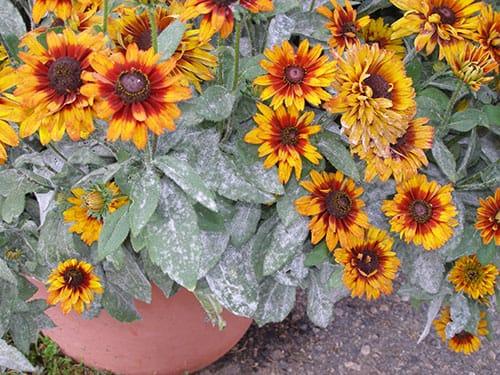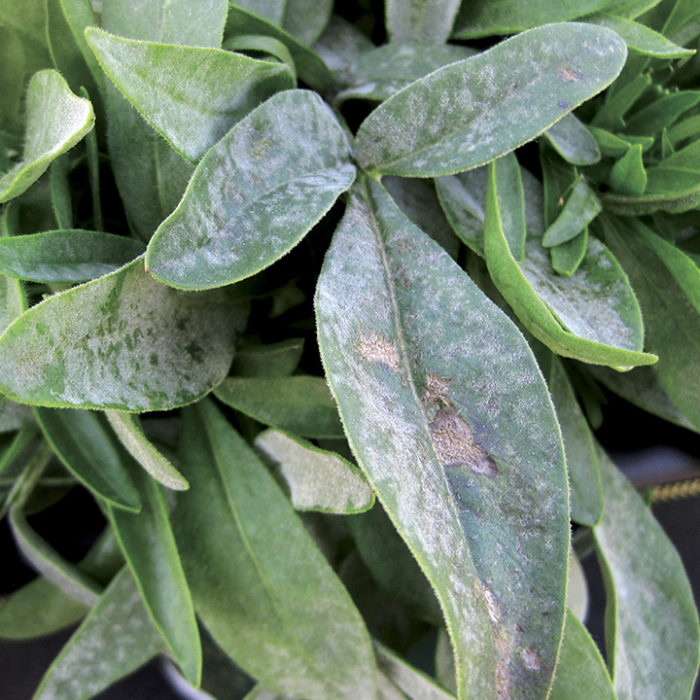Gazania Plant
Gazania, also known as Treasure Flower, is an outdoor flowering plant. Plant in well-draining soil with full sun exposure. Water consistently, and deadhead spent flowers for continuous blooming. Pruning helps maintain a compact and bushy appearance.

Habit
Perennial
Height
Up to 12 inches
Growth
Fast
Soil
Well Drained, Sandy-loam
Shade
Full Sun
Moisture
Moist
Edible
No
Medicinal
No
Origin
South Africa
Climatic Condition
Temperate, Subtropical
Temperature (°)
15-30
Humidity (%)
50-70%
Potting media
Loam, Compost
Fertilizers
Organic
Watering
Moderate
Plant Weight
300-700 g
Flowering Time
Spring- Summer
Soil Ph level
6.0-7.5
Water Ph level
6.0-7.5
Soil EC
1.0-1.3
Yield Per Plant
Ornamental, pollinator-friendly
NPK ratio
10:10:10
life Span
2-3 yrs
Health Benefits
Suggested Grow Media or Potting Mix ?
40% peat moss, 30% compost, 30% perlite
Suggested Fertigation/Fertilizers
Fertilize every 2 weeks with a balanced, water-soluble fertilizer.
Common Diseases and Remedies
Downy mildew , wilt .
Dense white to greyish fungal growth develops on the undersides of leaves
Discard infected plants. Apply a fungicide to the remaining plant
HEALTH BENEFITS
Gazania (Gazania rigens) has been used in folk medicine to treat toothaches, prevent miscarriages, and as a purgative. It also has antioxidant and hepatoprotective properties
What Is A Gazania ?
Gazania is a genus of flowering plants found in Southern Africa. These sun-loving plants are known for their colorful, daisy-like flowers and silvery-green leaves. They are frequently grown as ornamental plants in gardens and landscapes, especially in regions with a Mediterranean climate. Gazania is valued for its vigorous flowers and ability to withstand drought.

What Are The Different Types of Gazania Plant?
There are many different species of gazania plant, known for its flower-like flowers. Some species include Gazania rigens (treasure flower), Gazania linearis (last of Gazania), and Gazania krebsiana (copper gazania). Each species will vary in flower colour, size and growth habit.

How to care for Gazania plant?
1.Location :
Gazania thrives in full sun and well-drained soil. Place them where they will receive at least 6-8 hours of sunlight per day. Make sure the soil drains well so that there is no standing water. Water sparingly and allow the soil to dry between watering. Deadhead flowers encourage continued blooming and fertilize evenly every 4-6 weeks throughout the growing season. In colder climates, consider growing them as annuals or as winter protection.
2.Sunshine:
Gazania plants thrive in full sun and well-drained soil. Water moderately and allow the soil to dry between watering. Deadhead flowers stimulate the growth of new flowers and promote beauty. Apply a balanced fertilizer every 4-6 weeks during the growing season. Protect them from frost while they enjoy the warmth. Check for pests regularly and treat if necessary. In general, provide a sunny, well-drained location and your gazania will thrive.
3.Soil:
To care for your Gazania planting soil, make sure it is well drained. Use a mixture of garden soil and sand or perlite for good aeration. Water plants when the top soil is dry and avoid overwatering to prevent root rot. Add a layer of mulch to retain moisture and reduce weeds. Fertilize with a balanced water-soluble fertilizer throughout the growing season. Check for diseases and infections regularly and solve all problems in time. If the plant outgrows its container, consider repotting it.
4.Hydration:
Water your gazania plants regularly, keeping the soil moist but not waterlogged at all times. Wait for the soil surface to dry before watering again. Water at the base of the plant to prevent the leaves from getting wet. Adjust the frequency according to weather conditions; Increase the frequency during hot and dry seasons, and decrease the frequency during cold and rainy seasons. Mulching can help retain moisture and maintain soil temperature.
5. Nourishment:
Water sparingly and allow soil to dry between waterings. Overwatering can cause root rot. Apply water-soluble fertilizer every 4-6 weeks during the growing season (spring and summer). Do not over fertilize. Mulch around the base to retain moisture and maintain soil temperature.
6.Issues:
To care for Gazania plants, make sure they receive full sun and well-drained soil. Water moderately and allow the soil to dry between watering. Since gazanias are sensitive to cold, protect them from frost. Deadhead flowers encourage continuous blooming. Watch for pests such as aphids and treat with insecticides if necessary. Fertilize regularly throughout the growing season with a balanced fertilizer. Pay attention to the symptoms of the disease and solve all problems immediately. Prune back leggy or damaged growth to maintain a compact shape.
What Are The Benefits of gazania plant ?
Gazania plants have many advantages such as drought resistance, bright and colorful flowers, low maintenance and adaptability to different soil types. They also attract pollinators such as bees and butterflies, contributing to the biodiversity of the garden.

FAQ’s About Growing Gazania Plant
1.What Are the Best Growing Conditions for Gazania Plants?
Gazania plants thrive in well-drained soil and prefer full sun. They are drought tolerant once established, but regular watering is beneficial. Provide good air circulation around plants to prevent disease. The ideal temperature is around 60-75°F (15-24°C). Fertilize sparingly as they do not need heavy feeding. Repeated pruning of flowers will encourage continued blooming.
2.What are the Uses of Gazania Plants?
Gazania plants are generally used for ornamental purposes in gardens and landscapes. Its beautiful and colorful flowers make it popular:
Garden decoration
Containers and hanging baskets
Ground Cover
Erosion Control
Rock Garden
Drought-Tolerant Landscaping
Cut Flowers
Attracts pollinators
3.Can I Grow Gazania Indoors?
Gazania plants are generally better for growing outdoors as they thrive in full sun. However, you can try growing them at home in a sunny and beautiful place. Make sure the soil drains well and avoid overwatering to prevent root rot. Remember that indoors may not be ideal, so monitor the health of your nearby plants.
4.Which is the best pot for growing gazania in India?
A suitable pot with good drainage should be selected for growing gazania in India. Terracotta pots are a popular choice because they evaporate excess water and prevent the soil from becoming soggy. Make sure there is drainage at the bottom of the pot to prevent excess water, which can cause root rot. Choose a pot that is at least 12-14 inches in diameter to provide enough room for the Gazania's roots to spread. Also consider aesthetics and choose planters that complement your entire garden or interior.
5.How to propagate Gazania Plants from seeds or cuttings?
Gazania plants can be propagated from seeds or cuttings. To propagate from seeds, plant them in well-drained soil that keeps them moist and provides warmth. Use 4- to 6-inch stem cuttings to cut, remove lower leaves, soak in hormones, and plant in a mixture of soil and perlite. Keep the soil constantly moist until roots form. Both methods utilize warmth and sunlight for optimum growth.


